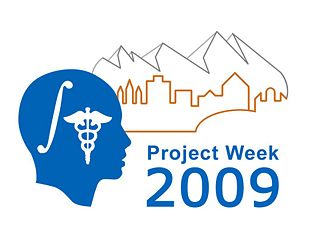Difference between revisions of "2008 Winter Project Week:IGT Intelligent Surgical Instrument Projects"
| (5 intermediate revisions by the same user not shown) | |||
| Line 1: | Line 1: | ||
{| | {| | ||
|[[Image:NAMIC-SLC.jpg|thumb|320px|Return to [[2008_Winter_Project_Week]] ]] | |[[Image:NAMIC-SLC.jpg|thumb|320px|Return to [[2008_Winter_Project_Week]] ]] | ||
| − | |valign="top"|[[Image: | + | |valign="top"|[[Image:AISTlogo.gif |thumb|320px|Intelligent Surgical Instruments Project]] |
|} | |} | ||
| Line 21: | Line 21: | ||
<h1>Approach, Plan </h1> | <h1>Approach, Plan </h1> | ||
| − | Our approach | + | Our approach is to use NA-MIC sandbox as the preliminary tools to share and maintain software toolkit for robotics control software. |
| + | We will also introduce network support of Slicer, recently extended by Steve Pieper, Luis Ibanez, and Haiying Liu to monitor and control robots from Slicer. | ||
| + | |||
</div> | </div> | ||
| Line 28: | Line 30: | ||
<h1>Progress</h1> | <h1>Progress</h1> | ||
| − | + | ====Jan 2008 Project Week==== | |
| − | + | N/A | |
| − | |||
| − | ====Jan | ||
| − | |||
| − | |||
</div> | </div> | ||
| Line 42: | Line 40: | ||
===References=== | ===References=== | ||
| − | * | + | *N/A |
| − | |||
| − | |||
| − | |||
| − | |||
| − | |||
Latest revision as of 01:13, 19 December 2007
Home < 2008 Winter Project Week:IGT Intelligent Surgical Instrument Projects Return to 2008_Winter_Project_Week |
Key Investigators
- AIST: Kiyo Chinzei
- Kyusyu U: Hong
- BWH: Nobuhiko Hata
Objective
The objective of this study is to develop software and hardware platform to perform robot-assisted surgery in the intelligent operating room. We have formulated three specific goals for AIST-BWH core: 1) design extensions to open-source software 3D Slicer to support the handling, fusion, and display of massive multi-modality data for image guided surgery of brain tumor, 2) develop versatile and portable inter-device communication mechanism for robotics surgery system, 3) develop open-source software engineering mechanism for project-side development, 4) validate planned extensions through use-case scenario evaluations and phantom data that simulate multi-modality image guided brain tumor surgery.
This joint venture between AIST and BWH is part of Intelligent Surgical Instruments Project sponsored by METI, Japan.Approach, Plan
Our approach is to use NA-MIC sandbox as the preliminary tools to share and maintain software toolkit for robotics control software. We will also introduce network support of Slicer, recently extended by Steve Pieper, Luis Ibanez, and Haiying Liu to monitor and control robots from Slicer.
Progress
Jan 2008 Project Week
N/A
References
- N/A
